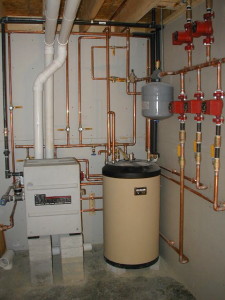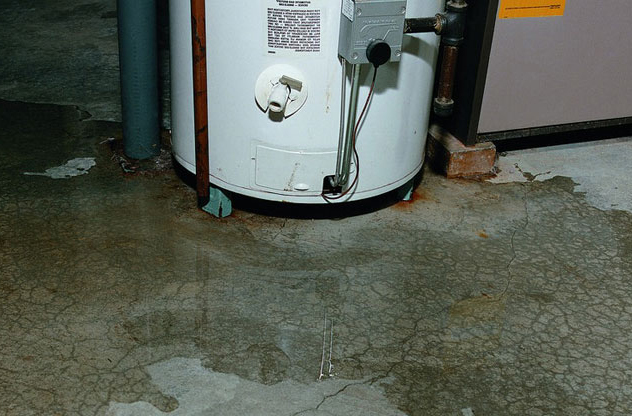Must-Follow Actions for Homeowners Managing Faulty Hot Water Systems
Must-Follow Actions for Homeowners Managing Faulty Hot Water Systems
Blog Article
What're your insights and beliefs about Maintaining & Draining a Water Heater?

Whether it lies in the cellar or a separate area, busted water heaters can create tension. A basic unit holds 80 gallons, so an over night leak will result in a flood. This results in major residential or commercial property damage with drenched wall surfaces as well as floorings. Having no hot water supply is also frustrating. If you are dealing with these concerns, bear in mind of the following:
Call the Plumber
After doing the very first two security actions, you need to call your plumber to come right away to deal with a fractured water heating system. There are typically signs that your aging water heating system has sediment build-up in the interior.
Rather, as quickly as you find these indications, have an expert come to inspect your water heating system tank. Normally, water heating systems have a life expectancy of regarding 8 to 12 years.
Cut Off the Cold Water Supply
Cut off the containers tap water supply from the source. This goes from your primary water line into the storage tank. When your tank remains in good condition, the cold water stops filling up when the storage tank is full. But considering that it is leaking, the water will certainly remain to move. Close the shutoff found at the top of the heating system. Rotate this clockwise to shut it off. You should turn off that main water supply line outside your residential or commercial property if you can not find it or reach it.
Shut Down Source Of Power
Before calling the plumber, closed off a gas water heating unit by transforming the temperature level dial. This will protect against electrocution, specifically if there is a leak as water is a conductor. Usually, the heating aspect shuts off when the water hits a particular temperature.
Clean Up Residential or commercial property
After calling the plumber, file damages by taking notes and pictures so you can claim your home owner's insurance coverage. From there, start the prompt cleanup. Get any kind of vital items to stop additional soaking. Remove any type of standing water to stop mold and mildew and also mildew development. If you have a submersible water pump, use that to drain the water. Or else, the traditional bucket method will additionally work. Attempt to wipe out every little thing, consisting of walls and also wall surfaces. Maintain them running to maintain air flowing if you have an electrical fan and dehumidifier. This will help prevent mold and mildew growth.
Remember, if you notice any concerns with your water heater, call the pros right away. You can not take this problem gently due to the fact that a damaged thermostat can elevate water temp to a dangerously high level, leading to accidental burns.
After doing the initial 2 safety and security steps, you must call your plumber to come right away to fix a fractured water heater. Rather, as soon as you detect these indications, have an expert come to check your water heater container. Before calling the plumber, shut off a gas water heater by turning the temperature level dial. If you have a submersible water pump, utilize that to drain the water. Remember, if you see any type of concerns with your water heating unit, call the pros right away.
8 REASONS YOUR HOT WATER HEATER IS NOT WORKING & HOW TO FIX
Water Heater Problems & Solutions
Loose or Damaged In-Line Valve
Unlike a water leak near the bottom of your water tank, a water leak on top of your system can be easily fixed. A common cause of water tank leaks includes a loose in-line valve. This is a handle that is located at the top of the water tank that is engineered to activate or deactivate the flow of water. To fix this problem, you will need to secure the nut that holds the ball or in-line valve in its location. If the leak becomes more severe once it is tightened, you will be required to travel to your local hardware store to purchase a new in-line valve for your water heater.
Damaged Pressure Relief Valve
Most types of water heaters are equipped with a pressure relief valve that is engineered to discharge pressure from the water tank when it becomes too high. If this valve on top of your water heater begins to leak, we recommend purchasing a new one online or from your local store. The process of removing and replacing pressure relief valves is not complicated.
No Warm Water
If you have an electric water heater in your home, the most typical cause of a lack of warm water is a broken heating element. Your water heater is equipped with two heating elements that are tasked with heating incoming water in the water tank. Once a heating element begins to malfunction, you will have little to no hot water to use for showering, cleaning, and laundry.
Low Supply of Hot Water
Are you continuously running out of warm water? This issue may be a byproduct of a cracked dip tube. This tube is engineered to push cold water to the base of your water tank to be heated. Once a crack or hole begins to form in the dip tube, the incoming supply of cold water may be released near the top or middle of your tank. As a result, the cold water on top of the tank will be sent to the faucets and showers in your house. This hot water heater problem can only be fixed by replacing the dip tube on your system. Since the process of installing a new dip tube is complex, we recommend calling a certified technician for help.
A low supply of warm water may also be a signal of excess sediment buildup in your water tank. As your water heater reaches the middle of its life cycle, minerals in water including magnesium and calcium will begin to collect at the base of the water tank. As the minerals continue to grow, there will be less room in the water tank to store hot water. To resolve this problem, flush your water heater to remove the excess minerals.
Water is Too Warm or Cold
If the water in your shower feels uncomfortable hot or cold, you can adjust the temperature of your water by changing the settings on your thermostat. Setting the temperature to 120 degrees Fahrenheit may help you save money on your utility bills. This is an excellent temperature to use if you’re worried about scalding or skin irritation. Does this temperature feel too cold? You may also adjust the thermostat to 140 degrees Fahrenheit to make your showers more pleasant. If your hot water heater is not working when you change the temperature, this is an indicator of a broken thermostat. Immediately find a certified plumbing or heating contractor in your area to repair or replace your thermostat.
Low Water Pressure
Low water pressure is not always caused by a malfunctioning water heater. If you live in an older home with smaller water pipes, the flow of water will be restricted prior to reaching our kitchen or bathroom skins. The only way to eliminate this hot water heater problem is to connect new ¾-inch water lines to your system. Another type of problem that may negatively impact your water pressure includes calcium deposits in water pipes.
As magnesium and calcium begin to form in your pipes, the diameter of your water lines will become smaller. As a result, the warm water from your water heater will not be able to travel in an efficient manner to your sinks or appliances. Since the process of replacing water pipes includes removing drywall, an average homeowner that does not have a plumbing license will not be able to fix this hot water heater problem.
https://www.wmhendersoninc.com/blog/8-reasons-your-water-heater-is-not-working-how-to-fix/

I recently found that blog entry about Maintaining & Draining a Water Heater when scouting around the web. If you enjoyed reading our post plz don't forget to share it. Thanks for taking the time to read it.
We're here for you, dial! Report this page